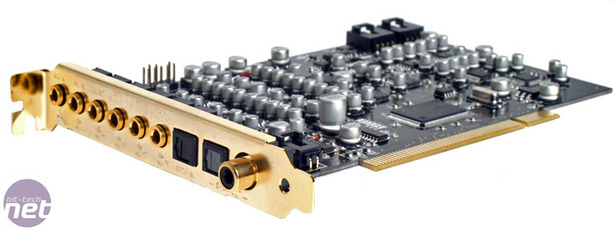Movies
- Silent Hill, Lost Memories DVD: 2.0 Channel 384KHz AC3 audio;
- V for Vendetta: 5.1 Channel AC3 audio 448KHz Dolby Digital Surround;
- Saving Private Ryan: 5.1 Channel AC3 audio 448KHz Dolby Digital Surround;
Overall, there are very specific and crisply defined sounds with good mixtures of clearly audible quiet speech as well as penetrating bass and gunshots. The Inferno fairs as well as the Claro and the two are almost indistinguishable.
Using the X-Fi, movies are less imposing regardless of what settings are selected, but the audio is still clear and precise. If you force the X-Fi to use stereo surround, it appears unnaturally out of place in comparison because the sound is already multichannel.
Games
- Command and Conquer 3: Tiberium Wars (demo);
- ArmA Armed Assault.
- Quake 4 (X-RAM and EAX 5 Advanced HD)
As expected, the X-Fi performs better with the tailored game mode and more advanced EAX enabled. Many gamers are sold into the fact that without EAX games will sound poor and it's generally not the case. The Claro won't sound as good as buying an X-Fi and getting into the world of more advanced EAX technologies.
If you're a hardcore gamer and play games that make use of EAX, there's no doubt that this will benefit you, because the support is coded into the game's engine. The native support is obviously going to sound better than the post processing / estimation method used by cards based on the Oxygen HD chip. For games that are outside of the advanced EAX features, there’s very little in it since these boards already support OpenAL and EAX 2.0.

Conclusions
The Claro has more in built features than the Inferno, including front panel audio support, gold plated connectors and an entire complement of S/PDIF connectors. Although the coaxial input is hardly an ideal solution, you can hardly blame HT Omega, especially given the limited space on a PCI bracket. However, HT Omega could have just used a breakout cable, or simply made a notch to pass the cable through so you can access it from the outside.It also has solid state capacitors that offer better power delivery and a longer life, which considering many people keep sound cards for years is arguably a good thing. However, does all this really justify a $40 greater price tag for essentially the exact same core hardware and software? I don't honestly think so, because the Sondigo Inferno still sounds ever so slightly better to me: it has a bass output that hits just the right spot, while the mid and high frequency sounds still sound great.
As a far as a pure multimedia solution goes the Claro is superior to Creative's X-Fi. Not only is it better in terms of the actual quality of headphone and surround sound, it's also better from a software point of view, too. If you spend more time gaming than watching TV on your PC, the X-Fi is the undisputed choice. The X-Fi does EAX 3.0-5.0 and offers far more package variations that include extras like break out boxes and 5.25" bay adapters for extra port varieties and inputs.
Obviously, better speakers or headphones will do probably just as much for your audio experience, but you have to balance the cost of both. It should be an obvious complement considering the money often shelled out on graphics cards, CPUs, memory and monitors these days. If you're just after a plain soundcard to listen to music and video, the Claro will do far more for your audio experience than an X-Fi. Heavy gamers need not apply though.





MSI MPG Velox 100R Chassis Review
October 14 2021 | 15:04









Want to comment? Please log in.